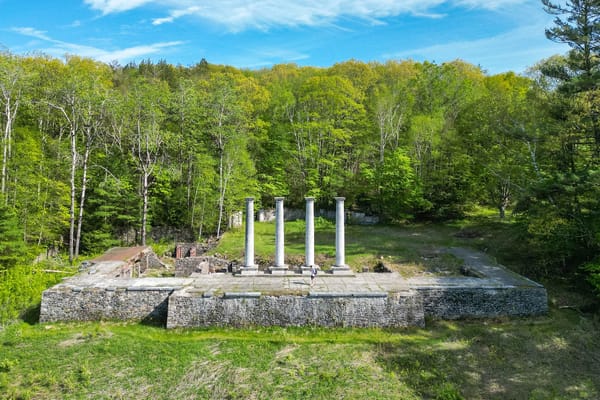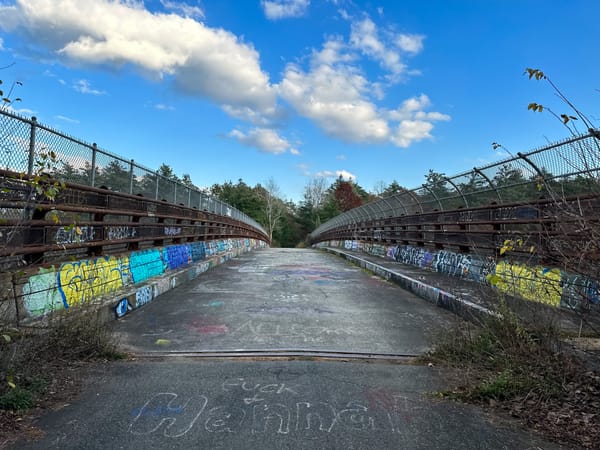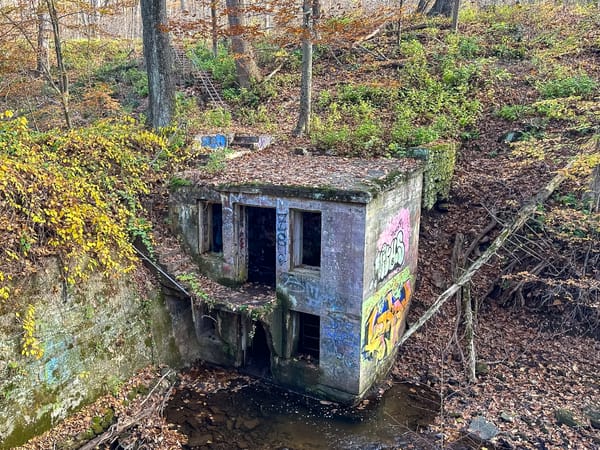Fort Greble Bachelor Officers' Quarters (Dutch Island, RI)
The abandoned Fort Greble Bachelor Officers' Quarters stands as a haunting relic of a bygone military era on Dutch Island off Jamestown, Rhode Island.

Exploring the Fort Greble Bachelor Officers' Quarters: Dutch Island’s Forgotten Military Residence
Perched on the remote northern tip of Dutch Island, just off Jamestown, Rhode Island, the Fort Greble Bachelor Officers' Quarters stands as a haunting relic of a bygone military era. What was once a stately residence for unmarried officers now lies in ruin—its brick walls cracked and overgrown, its roof long since collapsed. For those who venture across the waters to find it, the structure offers one of Rhode Island’s most compelling and eerie glimpses into the past.
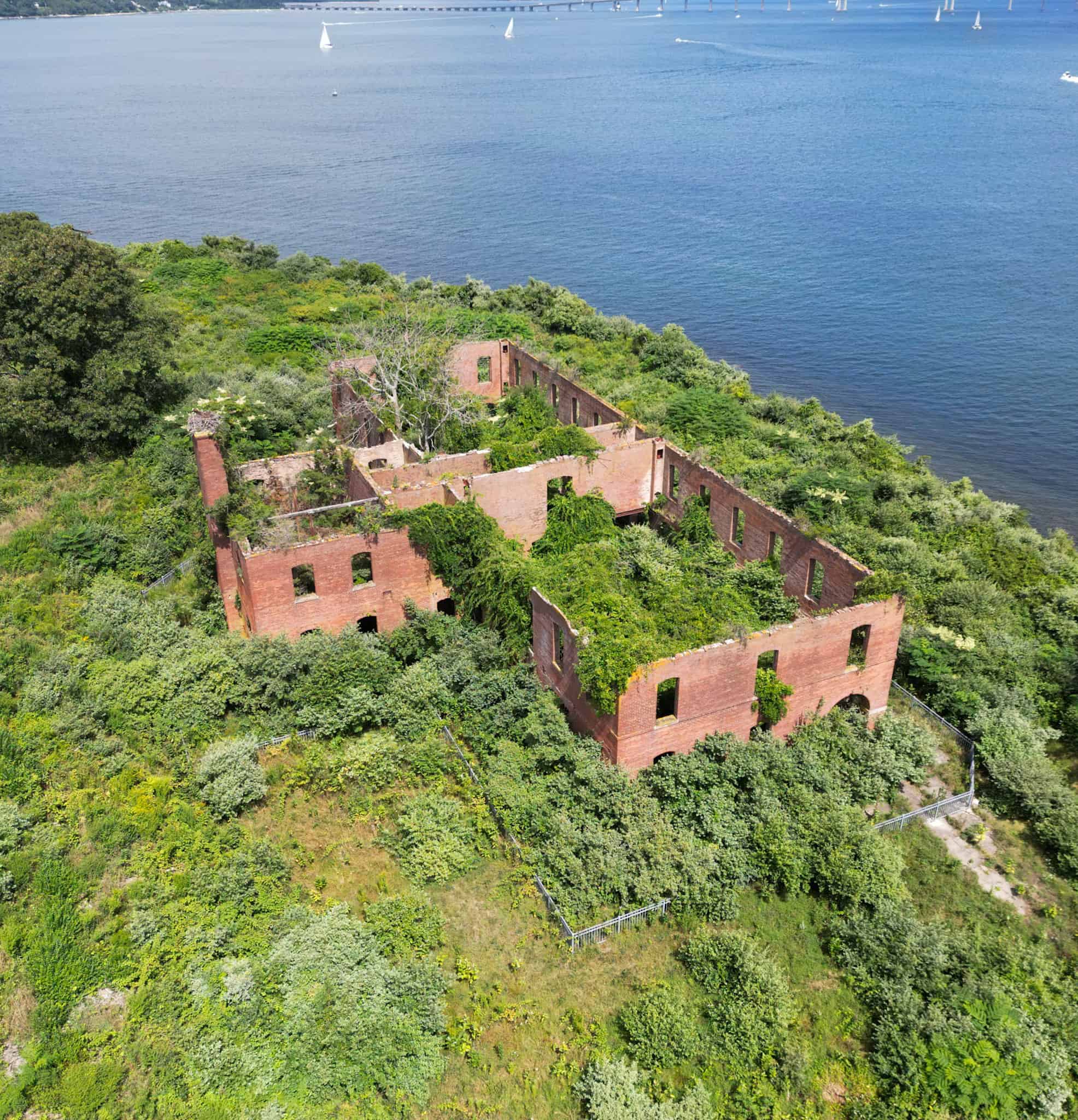
The Origins of Fort Greble
The story of the Bachelor Officers' Quarters is inseparable from that of Fort Greble, the island fortress that once guarded the western entrance to Narragansett Bay. Established around the turn of the 20th century, Fort Greble was part of the vast coastal defense network conceived under the Endicott Board of 1885. This board called for a modernized system of reinforced concrete gun batteries, observation posts, and living quarters across the U.S. coastline.
Named in honor of Lt. John Trout Greble, the first U.S. Army officer killed in the Civil War, Fort Greble featured multiple heavy gun batteries—including Battery Hale, Battery Sedgwick, and Battery Mitchell—all designed to protect the bay’s vital shipping channels.
To support the hundreds of soldiers and officers stationed here, a range of support buildings was erected: barracks, a hospital, a guardhouse, and the impressive Bachelor Officers Quarters, reserved for unmarried officers assigned to the post.

Life at the Bachelor Officers' Quarters
Built in the early 1900s, the Bachelor Officers' Quarters was a large, two-and-a-half-story brick structure, typical of military architecture from the period. Inside were dormitory-style rooms, communal dining areas, and a central gathering hall that likely served as both a mess and social hub.
The quarters were part of the daily rhythm of life on Dutch Island. Officers stationed here oversaw coastal defenses, artillery drills, and maintenance of the batteries spread across the island’s cliffs. The island was isolated, and life was demanding—harsh winters, limited transport, and close military discipline defined life at Fort Greble. Yet, for many officers, these quarters provided a measure of comfort and camaraderie amid their isolated posting.
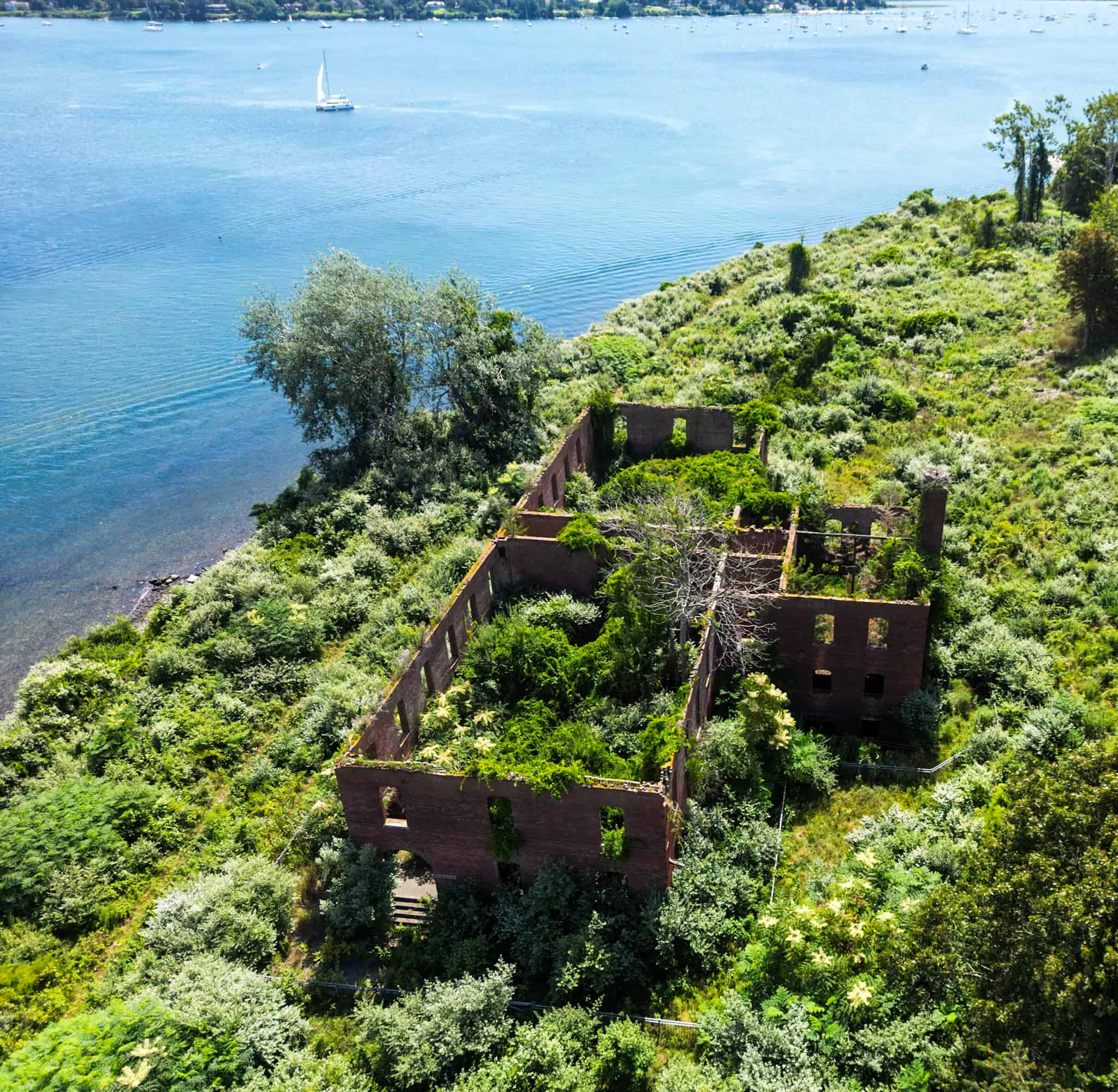
Abandonment and Decay
As military technology evolved and the usefulness of fixed coastal defenses waned, Fort Greble was decommissioned in 1947 following World War II. Over time, nature began reclaiming Dutch Island, and its structures—once alive with daily activity—fell silent.
The Bachelor Officers Quarters, built solidly of red brick and stone, survived longer than most, but exposure to decades of harsh coastal weather took its toll. By the late 20th century, the roof had completely collapsed, leaving only the outer walls and skeletal framework standing.
Today, the building is a haunting ruin—its interior choked with debris, its staircases and floors long vanished. Visitors can still spot fragments of old iron beams, the rusted boiler in the basement, and the outlines of arched windows and doorways that hint at its former elegance.
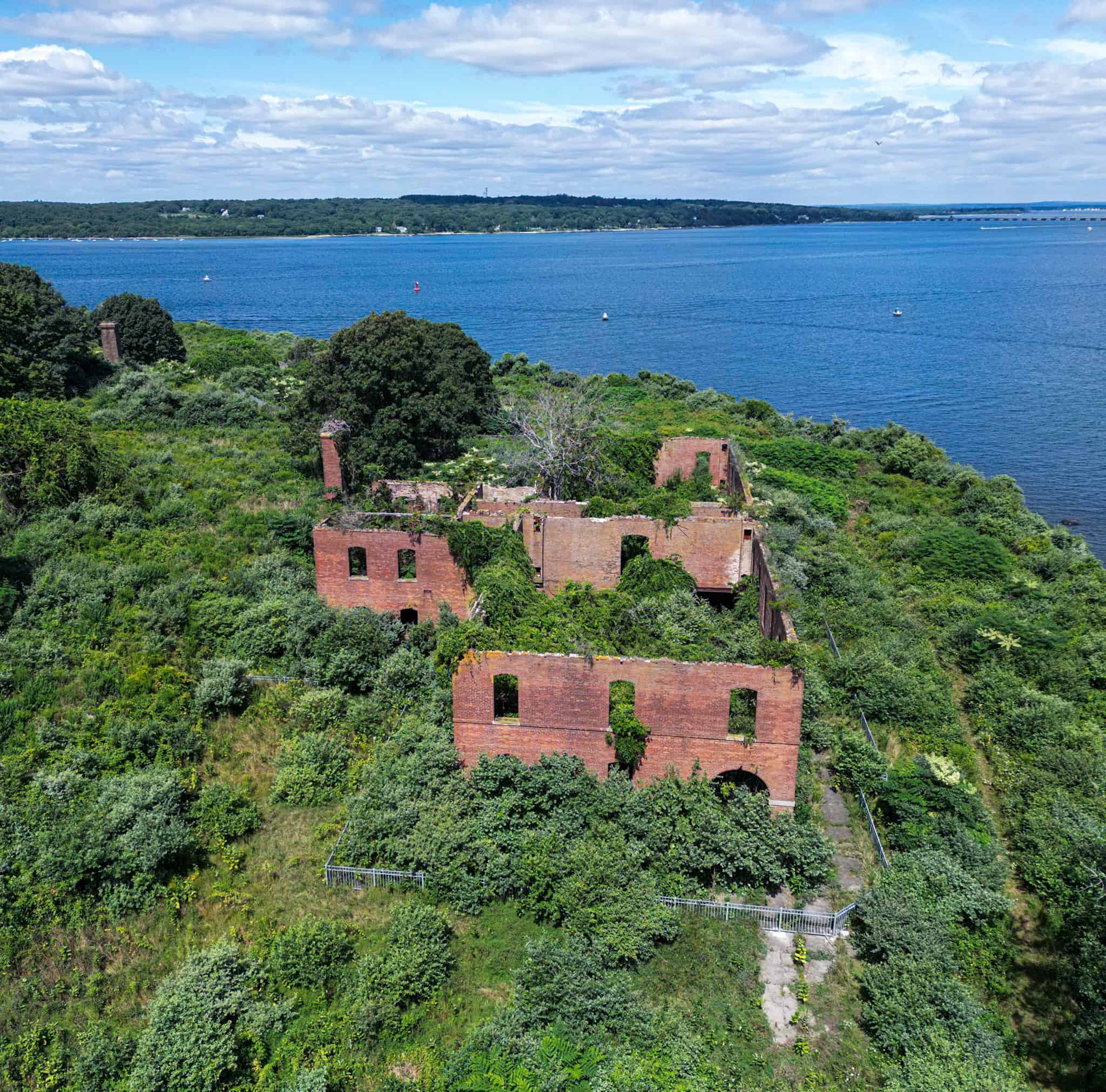
Visiting the Ruins Today
Reaching the Bachelor Officers' Quarters is an adventure in itself. The ruins sit near the northern end of Dutch Island, accessible only by water.
Visitors typically launch kayaks, paddleboards, or small boats from Fort Getty State Park on Jamestown’s western shore. From there, it’s a short paddle across West Passage to the island. The rest of the journey requires bushwhacking through dense vegetation and overgrown trails—a challenging trek not suited for the casual explorer.
The site is fenced off for safety reasons due to unstable masonry and potential environmental hazards, including asbestos and collapsing structural materials. However, visitors are free to explore the surrounding area and admire the building from the outside.
For those who make the effort, standing before the ruins is an awe-inspiring experience. The quiet rustle of leaves, the echoing cries of seabirds, and the skeletal outline of the building combine to create a surreal sense of timelessness.
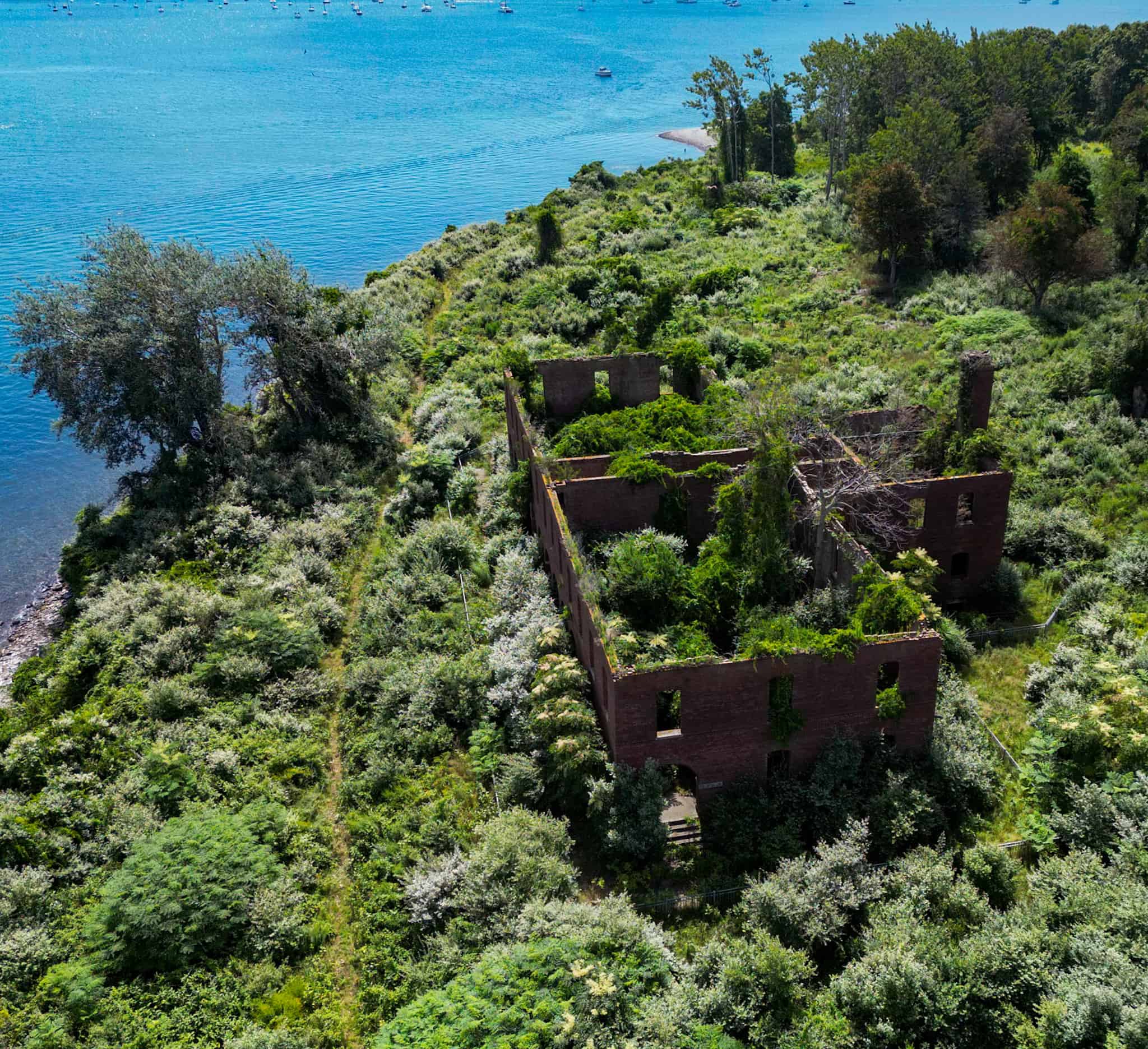
Visiting Information
- 📍 Location: Dutch Island, Jamestown, Rhode Island
- 🌐 GPS Coordinates: 41.505944, -71.397778
- 🛶 Access: By water only — kayak, canoe, or paddleboard from Fort Getty State Park
- 🅿️ Parking: Available at Fort Getty State Park (daily fee during summer months)
- 💰 Fees: Fort Getty charges a seasonal entrance fee
- ⚠️ Safety: Do not enter the structure; it is unstable and hazardous
- 🕰 Best Time to Visit: Late spring through early fall (calm waters and clear weather)
Quick Facts
- 🧱 Built: Early 1900s
- 🏗 Construction: Brick and stone
- 🏰 Purpose: Housing for unmarried U.S. Army officers stationed at Fort Greble
- ⚙️ Part Of: The Harbor Defenses of Narragansett Bay
- 🔥 Decommissioned: 1947 (Fort Greble closure)
- 🏚 Current Condition: Roof collapsed; outer walls partially standing
- 🛶 Access: Only reachable by boat from Jamestown
- 🚫 Entry: Prohibited; fenced off for safety
- 📸 Photogenic Value: High — dramatic ruins framed by overgrowth and ocean views
Final Thoughts
The Fort Greble Bachelor Officers Quarters is more than an abandoned military building—it’s a ghostly monument to Rhode Island’s coastal defense legacy. Weathered by salt, wind, and time, it endures as a symbol of both human ambition and nature’s quiet reclamation.
For history enthusiasts and adventurers alike, few sites in the state evoke such a powerful sense of the past. Standing among the crumbling walls of this forgotten residence, you can almost imagine the laughter and footsteps of officers long gone—echoes of a world that the tides and years have slowly taken back.

